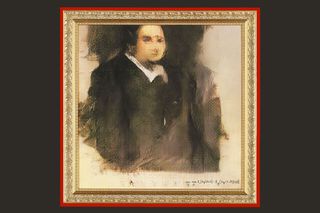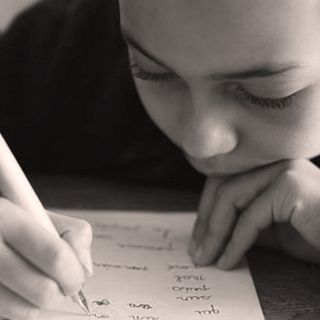
World’s First AI‑Generated Portrait Sells at Auction for US$432,500
It’s of an old-fashioned white dude.

In what is increasingly feeling like desperation to stay relevant in an age that has democratized art, yet another high-end international auction house has made headlines, this time for its sale of an artwork created by artificial intelligence. “Edmond de Belamy, from La Famille de Belamy” sold for US$432,500 yesterday — roughly 40 times the expected price — to an anonymous buyer.
At first glance, the AI-generated artwork is reminiscent of a Rembrandt — a bit more watery and unformed, as if it was smeared with a towel before the paint set, but the dark colors and the starkly lit face evoke the Dutch master. Probably because his work was used as inspiration; “Edmond de Belamy” was created by Obvious, a Paris-based art collective, using an algorithm that analyzed 15,000 portraits in order to synthesize the fundamentals of portraiture and come up with the ultimate, purest version of the genre: an image of an old-fashioned white dude.
“It is an exciting moment,” Obvious said in a statement. “Our hope is that the spotlight on this sale will bring forward the amazing work that our predecessors and colleagues have been producing.”
Not all fellow artists are as enthused. The Obvious portrait is akin “to a connect-the-dots children’s painting,” artist Mario Klingemann told The New York Times. Klingemann is a German artist who has included the algorithm in the making of his own artwork. Artists Anna Ridler and Robbie Barrat have also used the technology since its 2015 inception.
But whether or not it’s good, or mature, work may be beside the point. If a synthesis of 15,000 portraits concludes in one more portrait of an old white man, that’s evidence the body of portraiture until this point is overwhelmingly homogeneous — and deeply skewed to depict the tiny group of people who hold a disproportionate amount of the world’s power and wealth.
It’s not the first time AI has been skewed by overwhelmingly male inputs; earlier this month, Reuters reported that Amazon had abandoned an AI recruitment tool because it was discriminating against female applicants for technical positions. The algorithm was designed to scan the CVs of past applicants, identify the most common turns of phrase and then search current candidates’ CVs for the same. But the tech world, art world, and world in general, is dominated by men. From the mostly-male source CVs, “in effect, Amazon’s system taught itself that male candidates were preferable. It penalized resumes that included the word ‘women’s,’ as in ‘women’s chess club captain.’ And it downgraded graduates of two all-women’s colleges,” Reuters reported. Through machine learning, the recruitment algorithm grew to prefer resumes littered with macho-sounding verbs like “captured” and “executed,” rather than skills like coding.
Thanks to Obvious, it’s now obvious (sorry) that any forthcoming AI-generated art will be derivative and reinforcing of men’s dominance of the art world, too. And while Klingemann may be right about the quality of “Edmond de Belamy,” he also may be missing the larger point: The portrait reflects the underlying flaw of the world and society around it; the creation has revealed and amplified the bias of its creator. Which means that while I may not pay US$432,500 for the AI-genderated portrait (mainly because I don’t have that kind of money), I’d definitely call it art.
Liesl Goecker is The Swaddle's managing editor.
Related


Period Tracking Apps Are a Contraceptive Gift to a Tech‑Savvy Woman… Or Are They?
